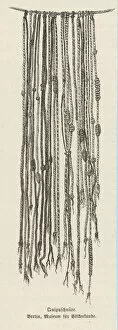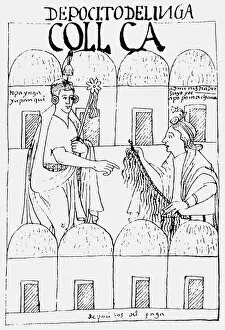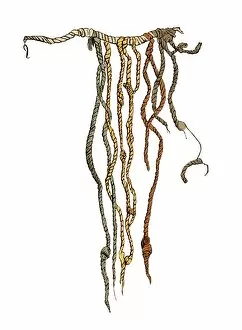Quipu Collection
The Peruvian Quipu is a fascinating ancient system of recording information using knotted strings
All Professionally Made to Order for Quick Shipping
The Peruvian Quipu is a fascinating ancient system of recording information using knotted strings. This unique method was employed by the peoples of the Andes in South America, particularly in early-colonial Peru. The quipu consisted of various colored strings made from natural materials such as cotton or wool, with knots strategically placed to represent numeric data. One intriguing depiction of this ancient practice can be found in the Birch Bark Drawing (colour litho), showcasing the intricate craftsmanship and attention to detail involved in creating these quipus. Another historical representation is seen in the Mexican Quipu (1857), highlighting its widespread usage beyond Peru. The role of a Chief accountant and treasurer, known as Tawantin Suyu Khipuq Kuraka, was crucial as they were responsible for maintaining and organizing these khipus. These skilled individuals served as keepers of knowledge, ensuring accurate records were kept within their communities. Inca Storehouses (woodcut) provides insight into how quipus played an essential role in managing resources and inventory control during Incan times. An Incan nobleman would receive reports from his officials who held these quipus, demonstrating their significance as a means of communication and record-keeping. Felipe Guaman Poma de Ayala's Nueva Cronica y Buen Gobierno features engravings depicting an Inca man holding a quipu. These illustrations give us a glimpse into how this device made up of strings and knots was used to count and record numeric information accurately.













